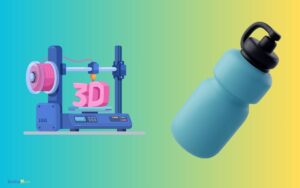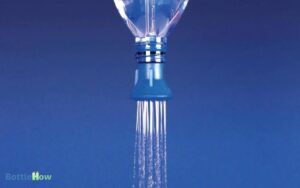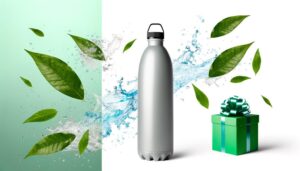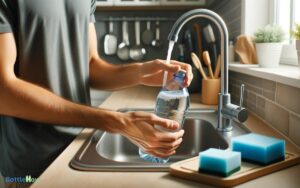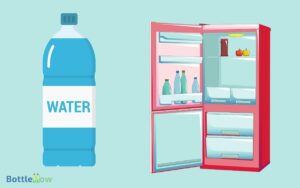Grayl Water Bottle Vs Lifestraw: Which One Better!
When comparing the Grayl Water Bottle to Lifestraw, consider their filtration capabilities and use cases.
Grayl uses a pressurized system to remove viruses, bacteria, protozoa, and heavy metals, ideal for diverse environments, including murky rivers and urban tap water.
Lifestraw employs hollow fiber membrane technology, effective against bacteria and protozoa but not viruses, making it better suited for clear streams and lakes.
Grayl provides quick filtration in 15 seconds, while Lifestraw requires direct drinking. Grayl’s durability and versatility come at a higher price, whereas Lifestraw’s simplicity and portability make it affordable. Understanding these details can guide your choice.
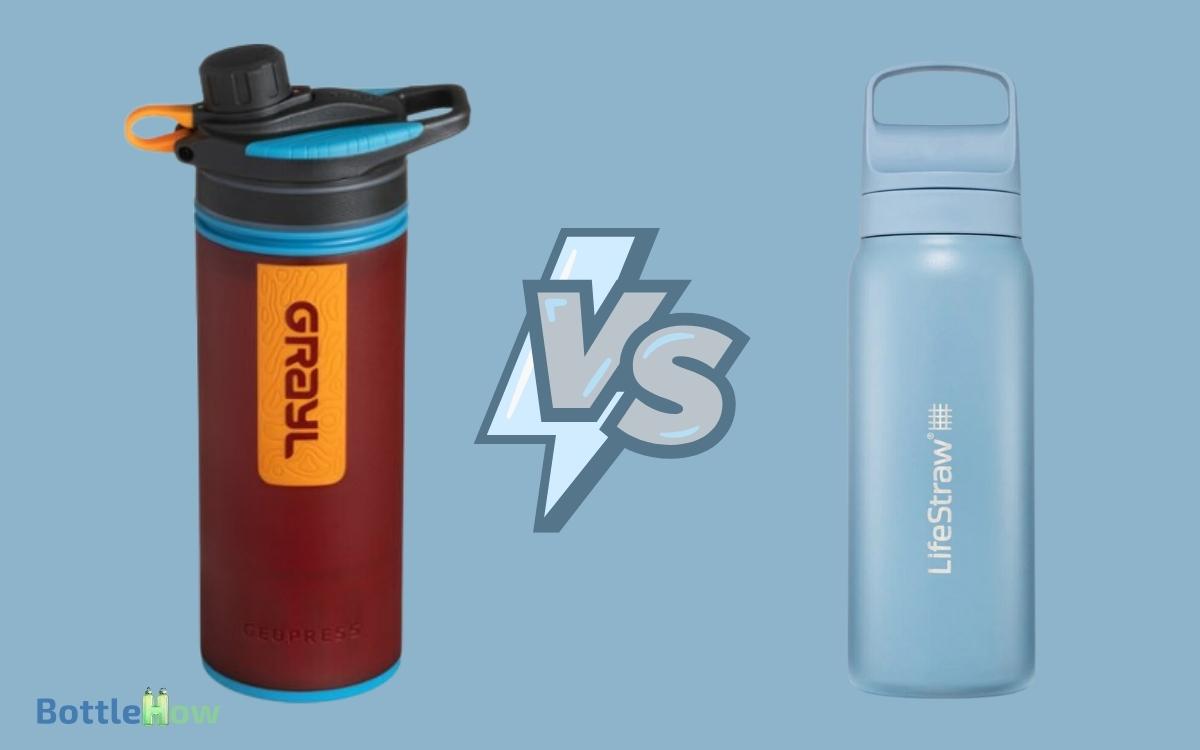
Key Takeaways
Comparison of Grayl Water Bottle and LifeStraw
| Feature | Grayl Water Bottle | LifeStraw |
|---|---|---|
| Filtration | Removes bacteria, viruses, protozoa, and particulates through a replaceable filter | Removes bacteria and protozoa but not viruses through hollow fiber membrane |
| Capacity | Typically holds around 16 ounces (473 ml) | Designed for individual use, no capacity limit |
| Durability | Made of durable materials, designed for long-term use. | Durable construction, resistant to impact and rough handling. |
| Convenience | Requires manual pressing for filtration | Simple straw design, easy to use |
| Portability | Relatively lightweight and portable | Lightweight and compact, suitable for travel |
| Maintenance | Replaceable filter cartridge needs periodic replacement | No replacement parts, requires periodic cleaning |
| Versatility | Can be used for both filtering and drinking water | Primarily designed for drinking directly from water sources |
| Price | Generally more expensive upfront, but potentially cost-effective in the long term | Often more affordable upfront, but replacement filters can add up over time |
Filtration Technology
When comparing the Grayl Water Bottle and the Lifestraw, it’s important to understand the distinct filtration technologies each employs. The Grayl uses a pressurized filtration system, requiring you to press water through a filter.
This mechanism removes viruses, bacteria, protozoa, and heavy metals, ensuring clean drinking water in about 15 seconds.
On the other hand, the Lifestraw uses a hollow fiber membrane technology. By simply sipping through the straw, you filter out bacteria and protozoa but not viruses.
The Lifestraw’s method relies on physical filtration with a pore size of 0.2 microns, effectively eliminating contaminants larger than that.
Each system has its specific advantages and limitations, directly impacting the quality and speed of water purification.
Water Source Compatibility
When evaluating the Grayl Water Bottle and Lifestraw, you need to take into account their compatibility with various water sources.
The Grayl’s filtration system efficiently handles a broader range of contaminants, making it suitable for diverse environments.
In contrast, Lifestraw excels in simplicity, but may be less versatile regarding water source adaptability.
Versatility in Water Sources
How well do the Grayl Water Bottle and Lifestraw perform when faced with various types of water sources? The Grayl Water Bottle excels in filtering out bacteria, viruses, and heavy metals, making it a reliable choice for travelers and outdoor enthusiasts. Lifestraw, on the other hand, is highly effective for filtering bacteria and parasites but does not remove viruses as efficiently as the Grayl. For those comparing different options, checking a cirkul water bottle review can provide additional insights into hydration solutions tailored to everyday use.
The Grayl Water Bottle excels in diverse environments, effectively handling murky rivers, stagnant ponds, and even urban tap water. Its press design guarantees consistent filtration across these sources.
Lifestraw, on the other hand, is highly effective for clear water sources like streams and lakes. However, it struggles with heavy sediment or chemical-laden water, as it lacks a pre-filtration system.
While both tools are portable and user-friendly, Grayl offers more versatility in challenging conditions.
For outdoor enthusiasts and travelers, Grayl’s adaptability provides a significant advantage, ensuring safe drinking water from a broader range of sources.
Filtration System Efficiency
Comparing the filtration system efficiency of the Grayl Water Bottle and Lifestraw reveals key differences in their water source compatibility.
The Grayl Water Bottle uses a pressurized filtration system, effectively removing viruses, bacteria, protozoa, and particulates. Its advanced filtration process makes it suitable for diverse water sources, including tap water, rivers, and lakes.
On the other hand, Lifestraw employs a hollow fiber membrane filter that excels at removing bacteria and protozoa but doesn’t filter out viruses.
This makes Lifestraw more appropriate for backcountry or rural settings where viral contamination is less likely.
Both systems have their strengths, but your choice will depend on the specific water sources you’ll encounter. For extensive protection, Grayl offers broader compatibility.
Usability in Diverse Environments
Both the Grayl Water Bottle and Lifestraw demonstrate distinct strengths and limitations in handling various water sources across different environments.
When evaluating water source compatibility, you’ll notice that each product excels in specific scenarios.
| Environment | Grayl Water Bottle | Lifestraw |
|---|---|---|
| Urban | Highly effective | Moderately effective |
| Wilderness | Highly effective | Highly effective |
| International Travel | Highly effective | Moderately effective |
| Disaster Relief | Highly effective | Highly effective |
| Daily Use | Convenient | Less convenient |
The Grayl Water Bottle’s advanced filtration system can handle viruses, making it suitable for international travel and urban environments.
The Lifestraw, while excellent for wilderness and disaster relief, isn’t as effective against viruses, limiting its use in diverse urban settings.
Filtration Speed
When evaluating filtration speed, you need to take into account the time it takes for each device to produce clean water. Grayl’s system provides a rapid filtration process, completing in about 15 seconds.
While Lifestraw’s flow rate is slower and varies based on suction strength. In emergency situations, Grayl’s efficiency offers a significant advantage over Lifestraw.
Time to Clean Water
Filtration speed is a critical factor that determines how quickly you can have access to clean water with the Grayl and Lifestraw.
The Grayl operates with a press mechanism, allowing you to filter water in about 15-30 seconds. This is ideal for situations where you need water quickly, such as hiking or emergency scenarios.
On the other hand, the Lifestraw requires you to drink directly from a water source, taking more time to draw water through its filter. This can be less convenient if you need to fill a container or hydrate multiple people.
Both devices have their merits, but the Grayl’s faster filtration speed gives you a distinct advantage in time-sensitive situations.
Flow Rate Comparison
Comparing the flow rate between the Grayl and Lifestraw reveals distinct differences in how swiftly each device can provide clean drinking water.
The Grayl water bottle employs a press mechanism, allowing you to filter 16 ounces of water in approximately 15 seconds. This rapid filtration is achieved through its innovative design, which combines ease of use with speed.
On the other hand, the Lifestraw relies on suction for filtration, requiring you to draw water through the straw. While effective, this method is inherently slower, averaging around 3-5 minutes to drink the equivalent volume.
The Grayl’s faster flow rate offers an advantage for those needing quick access to filtered water, especially in situations where time is of the essence.
Efficiency in Emergencies
In emergency situations where every second counts, the Grayl water bottle‘s rapid filtration speed provides a critical advantage over the Lifestraw.
The Grayl purifies 24 ounces of water in just 15 seconds, which is notably faster than the Lifestraw’s flow rate of 1.7 liters per minute.
This efficiency can be vital when you need clean water immediately. With the Grayl, you press the filtration system and have drinkable water almost instantly.
In contrast, using the Lifestraw requires continuous suction, which can be time-consuming and physically demanding in a crisis.
For scenarios where swift access to safe drinking water is paramount, the Grayl’s superior filtration speed ensures you stay hydrated and safe without unnecessary delays.
Ease of Use
When evaluating ease of use, the Grayl water bottle‘s one-press design allows you to filter water quickly with minimal effort.
Simply fill the outer container with water, insert the inner press, and push down. This action filters and purifies the water in about 15 seconds.
In contrast, the Lifestraw requires you to drink directly from the source, which can be inconvenient and physically demanding.
You need to suck the water through the filter, which can be challenging if the water source is low or hard to reach.
Additionally, the Lifestraw doesn’t store water, so you must repeat the process each time you need a drink.
Portability
Both the Grayl water bottle and the Lifestraw excel in portability, but their designs cater to different user needs and scenarios.
The Grayl integrates a filtration system within a compact bottle, making it ideal for those who prefer a self-contained unit. It’s easy to carry in a backpack’s side pocket and doesn’t add much bulk.
On the other hand, the Lifestraw is a lightweight, straw-like filter that you can slip into any small pocket or attach to your gear. It’s highly suitable for minimalists or those who plan to drink directly from natural water sources.
Each product offers unique advantages depending on your specific portability requirements and the nature of your outdoor activities.
Durability
When evaluating durability, you’ll need to take into account material strength, impact resistance, and longevity.
The Grayl water bottle uses robust materials designed to withstand significant wear and tear, while the Lifestraw emphasizes lightweight construction.
These factors directly influence how each product performs under harsh conditions and prolonged use.
Material Strength Comparison
How do the Grayl water bottle and Lifestraw compare when it comes to material strength and overall durability?
The Grayl water bottle employs BPA-free plastic and stainless steel components, ensuring a robust build that withstands daily wear and tear. Its solid construction provides long-term reliability, making it a trusted choice for outdoor enthusiasts.
On the other hand, the Lifestraw primarily utilizes durable plastic, engineered for lightweight and portable use. While it’s designed for longevity, it may not match the Grayl’s superior strength.
Both products are built to last, but the Grayl’s combination of materials offers enhanced durability. When choosing based on material strength, the Grayl holds a slight edge, providing added confidence in demanding environments.
Impact Resistance Levels
Evaluating the impact resistance levels of the Grayl water bottle versus the Lifestraw reveals critical differences in their ability to withstand physical shocks.
The Grayl water bottle, constructed with robust materials, is designed to endure drops and impacts, making it highly durable in rugged environments. Its integrated filter system remains intact even after significant physical stress.
Conversely, the Lifestraw, while effective at filtration, lacks the same level of impact resistance. Its plastic construction is more susceptible to damage if dropped or subjected to rough handling.
If you’re planning an adventure that involves potential physical impacts, the Grayl offers superior durability, ensuring your water filtration system remains functional despite harsh conditions. This makes it a reliable choice for demanding situations.
Longevity and Wear
Both the Grayl water bottle and the Lifestraw exhibit distinct longevity and wear characteristics, directly impacting their overall durability in different environments.
The Grayl water bottle features a robust construction with replaceable filters, guaranteeing long-term use. Its hard-shell exterior resists dents and scratches, making it suitable for rugged conditions.
In contrast, the Lifestraw, while highly effective, has a finite lifespan of approximately 1,000 liters, after which it must be replaced. It’s lighter and more portable but requires careful handling to avoid damage.
You’ll find the Grayl ideal for repeated, heavy-duty use, whereas the Lifestraw excels in lightweight, emergency scenarios.
Understanding these differences ensures you select the right tool for your specific needs and environment.
Maintenance
Proper maintenance of your Grayl Water Bottle and Lifestraw is essential to guarantee peak performance and longevity. For the Grayl, disassemble the components and rinse with clean water after each use.
Avoid using soap, as it can leave residues that affect taste. Periodically, sanitize the bottle with a mild bleach solution (one capful per liter of water) and let it air-dry completely.
For the Lifestraw, blow through the mouthpiece after each use to expel residual water and prevent clogging.
Backflush with clean water to clear out any trapped particles. Store the Lifestraw in a cool, dry place to prevent mold growth.
Following these maintenance steps will ensure your water filtration devices remain efficient and ready for use.
Lifespan
To guarantee the longevity of your Grayl Water Bottle and Lifestraw depends on usage frequency, maintenance, and environmental conditions.
The Grayl filter typically lasts for about 300 uses, equivalent to around 150 liters. Proper maintenance, such as regular cleaning and drying after use, can help extend its durability.
On the other hand, the Lifestraw has a lifespan of approximately 1,000 liters, translating to several months of daily use.
It’s crucial to avoid freezing temperatures and ensure thorough drying to maintain its functionality. Both devices rely heavily on consistent care to maximize their performance.
Regularly inspect for wear and replace filters as needed. By adhering to these guidelines, you can guarantee your water filtration system serves you efficiently and reliably.
Taste of Water
When comparing the taste of water filtered by Grayl and Lifestraw, you’ll notice distinct differences influenced by their respective filtration technologies.
Grayl utilizes a combination of activated carbon and ion exchange, which effectively removes heavy metals, chemicals, and particulates, resulting in water with a clean, neutral taste.
Lifestraw, on the other hand, employs a hollow fiber membrane that filters out bacteria and protozoa but lacks the same level of chemical filtration.
Consequently, water from Lifestraw may retain some chlorine or chemical aftertastes depending on the source.
If you’re highly sensitive to taste, Grayl’s advanced filtration might be more appealing. However, both systems provide safe, potable water, making taste preference a secondary consideration to their primary function of filtration.
Price Comparison
Beyond taste considerations, comparing the price points of Grayl and Lifestraw reveals notable differences in their affordability and long-term value.
The Grayl water bottle typically costs around $70, while the Lifestraw personal filter is approximately $20.
However, the Grayl offers a 300-use lifespan per cartridge, translating to 40 gallons of purified water. In contrast, the Lifestraw’s filter lasts for up to 1,000 gallons, but it doesn’t come with a built-in bottle.
When considering replacement costs, Grayl’s filter replacements are about $25 each, whereas Lifestraw doesn’t require frequent replacements due to its extended filter life.
Your choice should factor in initial investment and ongoing costs, aligned with your specific water filtration needs and usage frequency.
Environmental Impact
When considering the environmental impact of these water filtration options, it’s crucial to evaluate both their material composition and longevity.
The Grayl Water Bottle features a durable, reusable design with replaceable filters, which helps minimize waste and encourages long-term use. Its construction primarily consists of BPA-free plastic and stainless steel, both of which are recyclable.
In contrast, the Lifestraw prioritizes a simpler, lightweight design meant for short-term use. While its plastic components are sturdy, they aren’t typically recyclable, potentially leading to landfill waste.
However, Lifestraw’s social initiatives, such as providing clean water to developing areas, offer an environmental benefit.
Ultimately, the Grayl Water Bottle proves to be more sustainable due to its reusable design and recyclable materials.
User Reviews
User reviews frequently highlight the Grayl Water Bottle’s effectiveness in removing contaminants and its ease of use, while Lifestraw often receives praise for its portability and straightforward design.
Users appreciate the Grayl for its:
- Advanced filtration: Removes viruses, bacteria, protozoa.
- Simple operation: Fill, press, and drink.
- Durability: Built to withstand rugged conditions.
- Versatility: Suitable for various water sources.
In contrast, Lifestraw users commend its:
- Lightweight build: Ideal for backpacking and emergencies.
- Ease of maintenance: Simple to clean and store.
- Immediate usability: No waiting for filtration.
- Affordability: Cost-effective for budget-conscious consumers.
Both products have garnered positive feedback for their specific strengths, aiding users in diverse scenarios.
Best Use Cases
When deciding between the Grayl Water Bottle and Lifestraw, consider specific scenarios like international travel, hiking, and emergency preparedness to determine the best fit for your needs.
For international travel, the Grayl excels due to its ability to filter viruses, bacteria, and heavy metals, ensuring safe drinking water from various sources.
During hiking, Lifestraw’s compact size and ease of use make it ideal for quick hydration from streams and lakes.
In emergency preparedness, Grayl’s thorough filtration capabilities provide a reliable water source in disaster situations.
Both options offer distinct advantages, so align your choice with the primary use case. Understanding these contexts will help you select the most effective water purification solution.
Conclusion
So, you’ve got two excellent choices: Grayl and LifeStraw. Grayl’s for the impatient purists needing speed and versatility. LifeStraw’s for the minimalist explorers who thrive on simplicity.
Both excel in their niches, yet neither can moonlight as a Swiss Army knife. Price tags and eco-cred? Well, let’s just say neither will save the planet single-handedly.
Ultimately, your perfect companion depends on whether you’re sipping from a stream or chugging in a chaotic urban jungle. Choose wisely.

